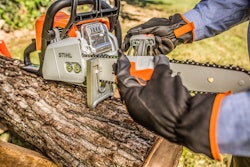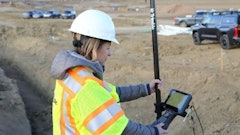There is nothing like spring, especially if you're a baseball fan. Preparing for your construction season is similar to a professional baseball team preparing for its season. Even if your business is ongoing for 12 months, there is still a subconscious "spring training" thought process.
Consider my Spring Training Punch List for contractors - things you should have in your playbook to bring your team to a championship season.
1. Review your strategic vision & plan.
You may have heard the old expression, "If you always do what you always did, you'll always get what you always got!" Each year you need to dust off the old strategic plan and spend some serious time assessing where you are, per your plan, and whether you are prepared for the oncoming season. Successful contractors complete their strategic thinking time well before their employees begin the season. Make your updates and revisions and focus on what you want to accomplish.
2. Assess labor, equipment & vendors.
The three primary direct costs on every job include labor, equipment and materials. Therefore, take a very honest assessment of your employees. Do you have workers who need to be educated on new skills? Is it time to promote one of your crew members to a full crew foreman this year? Is this the workforce you feel confident with?
In regards to equipment, answer these questions: What shape is your equipment in? What preventive maintenance plan do you have, in writing? What pieces of equipment would you be wise to rent/lease versus purchase depending on the type of year you're expecting?
As for material vendors, answer these questions: Are you satisfied with your material vendors? Have you negotiated the best purchase options for the year?
3. Make time for spring cleaning.
Start each spring with a clean presence. Dirty tools eventually invite employees to mishandle them. Sharpen or replace blades and drill bits, replace loose or taped-up electrical cords and wires, and apply the same detail to your yard by improving your signage, outlining parking spots for specific equipment and vehicles, parking your vehicles heading "out," and creating a "one-way" driving path. Steam clean equipment, repaint vehicles, and make sure your company name and contact info are easy to see from a drive-by marketing respect.
4. Develop & conduct spring training.
Bring your leaders in one to two weeks before the season opens and have them clean up, straighten up, paint and organize all the items mentioned previously. Also, revisit the "basics of construction" with your leaders. Review customer satisfaction, the critical components of safety "to, on, and from the job," talk through every work process you have to ensure quality is part of each step, and have a healthy discussion on how to lead the workforce. Then, two to three days before the season begins, bring in the rest of your workers and conduct mini-training sessions on everything you want to see at peak performance this season. You and your leaders can head up training sessions, demonstrations on safety procedures and techniques, proper management of tools and equipment, the professional methods and manners when interacting with customers, and so on.
5. Visit your financial partners.
It's a good idea to visit your banker, or bankers, about the new season start-up, how the early season looks and the cash flow you are anticipating. It is also good to re-educate your banker on the nature of your business, what the ups and downs of receivables looks like during the year and move to renegotiate the amount of money you need to have to get the season off to the right start.
6. Increase marketing efforts & customer contact.
You should have been selling through the off-season, but it's important to increase your prospecting and customer contact in the beginning of the season. Regardless of your work backlog, it is good to double-up on your marketing and selling efforts since many clients will subconsciously consider spring a time to get things cleaned, remodeled and ready for the long months ahead.
For customers you have penciled into your schedule, call them to remind them of upcoming project dates. In some cases you may need to visit them to review contracts and bids and update each other on any needs that may have arisen over the winter.
7. Conduct a retreat.
Perhaps the most important Spring Training Punch List item to perform is a getaway with your senior leaders and advisors to set goals and develop detailed plans to achieve them. Review individual roles and responsibilities. Spend team time problem solving upcoming "surprises" that you know will happen during the season (like what to do if half the crew doesn't show up, it rains or equipment breaks down). Most of all, spend some time making personal commitments to each other about how you want to conduct yourself during the course of the season, reminding each other of the importance of professionalism no matter what the situation.
Great construction leaders, just like great baseball managers, realize the season is long and grueling. Whether you have a natural "break" in your season or not, turn each spring into your own time for review, refreshment and re-commitment to your construction company. Have a great season




















